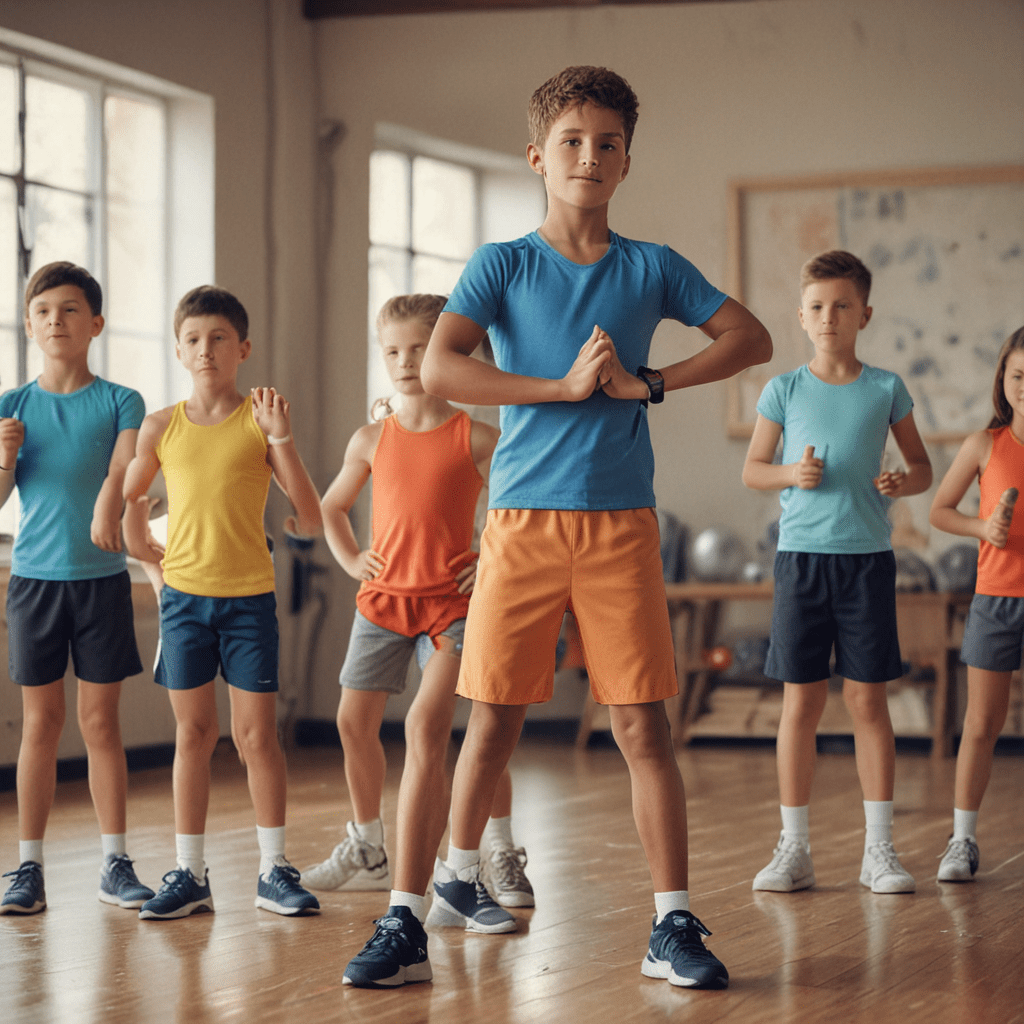
1. Introducing the Mind-Body Connection
The mind and body are intricately connected, influencing each other in profound ways. This connection is especially evident during exercise, where the mental and physical aspects work in harmony to enhance performance and well-being. Teaching kids about this connection empowers them to harness their minds to optimize their workouts and cultivate a healthy lifestyle.
2. Benefits of Understanding the Connection
Comprehending the mind-body connection provides numerous benefits for children. It fosters:
- Increased Motivation: Understanding how the mind can drive physical performance encourages children to set goals, push their limits, and achieve greater results.
- Improved Concentration: Exercise enhances cognitive function, leading to better focus and attention. By recognizing the mind-body connection, kids learn to access this mental boost during their workouts.
- Effective Stress Management: Regular exercise releases endorphins, which have mood-enhancing effects. Teaching kids the mind-body connection empowers them to use exercise as a tool to manage stress and anxiety.
- Improved Self-Awareness: Exercise provides an opportunity for self-reflection and body awareness. By paying attention to their thoughts, emotions, and physical sensations, kids gain a deeper understanding of themselves.
- Enhanced Resilience: Exercise challenges children physically and mentally, fostering resilience and adaptability. Understanding the mind-body connection helps them navigate setbacks and cultivate a growth mindset.
3. Practical Exercises to Demonstrate the Connection
Interactive exercises can help kids grasp the mind-body connection:
- Mindful Walking: Encourage children to notice the sensations in their bodies as they walk, paying attention to their breath, heartbeat, and the movement of their muscles.
- Body Scan: Have kids lie down and bring their attention to different parts of their body, scanning from head to toe. This helps them become aware of their physical sensations and promotes relaxation.
- Controlled Breathing: Teach children breathing techniques that calm the mind and enhance focus, such as box breathing or alternate nostril breathing.
- Visualization: Encourage kids to visualize themselves performing specific exercises or achieving their fitness goals. Visualization enhances mental imagery and boosts motivation.
- Positive Self-Talk: Help kids practice positive self-talk during exercise, encouraging them to focus on their strengths and capabilities rather than setbacks or perceived weaknesses.
6. Encouraging Positive Self-Talk
Positive self-talk is crucial for fostering a healthy mind-body connection. Teach kids to replace negative or self-critical thoughts with positive affirmations that empower and motivate them during exercise. Encourage them to focus on their strengths, progress, and the enjoyment of the activity.
7. Cultivating Gratitude and Appreciation
Gratitude and appreciation enhance our overall well-being and amplify the mind-body connection. Encourage kids to express gratitude for their bodies, their ability to move, and the opportunity to engage in physical activities. Practicing gratitude helps them appreciate the benefits of exercise and fosters a positive mindset.
8. Role-Playing and Storytelling
Role-playing and storytelling can be effective ways to teach kids about the mind-body connection. Create scenarios where they have to overcome challenges or navigate emotional situations through exercise. Engage them in discussions about how their thoughts and emotions influence their physical performance and vice versa.
9. Using Technology to Support Mind-Body Awareness
Technology can complement efforts to promote mind-body awareness in kids. Use fitness trackers or mindfulness apps to monitor their activity levels and encourage healthy habits. Explore virtual reality (VR) or augmented reality (AR) experiences that immerse kids in interactive fitness scenarios, fostering a deeper connection between their minds and bodies.
10. Creating a Supportive Environment
Creating a supportive environment is essential for fostering a healthy mind-body connection in kids. Encourage open communication about their thoughts and feelings during and after exercise. Provide positive reinforcement and celebrate their achievements. Seek professional guidance if needed to address any underlying mental health concerns that may impact their physical well-being.
FAQs
Q: Why is it important for kids to understand the mind-body connection?
A: Understanding the mind-body connection equips kids with tools to optimize their workouts, manage stress, and cultivate a healthy lifestyle.
Q: How can I help my child develop positive self-talk during exercise?
A: Encourage them to focus on their strengths, progress, and the enjoyment of the activity. Help them replace negative thoughts with positive affirmations.
Q: What are some practical ways to demonstrate the mind-body connection to kids?
A: Engage them in mindful walking, body scan exercises, controlled breathing techniques, and visualization.
Q: How can I use technology to support mind-body awareness in my child?
A: Utilize fitness trackers, mindfulness apps, and VR/AR experiences to monitor activity levels, encourage healthy habits, and enhance their understanding of the mind-body connection.

